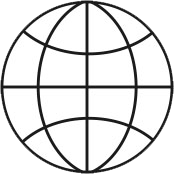
ap

ap
An International Peer Reviewed Research Journal

AJP
SSN : 0971 - 3093
Vol 30, No 6, June, 2021
Asian
Journal of
Physics
_________________________________________________________________________________________________________________________________
Volume 30 No 6 June 2021
_________________________________________________________________________________________________________________________________
A Special Issue Dedicated
to
Prof D Narayana Rao
Guest Edited By : G Vijaya Prakash, B Maruthi Manoj &
Shivakiran Bhaktha B N
Anita
Publications
FF-43, 1st Floor, Mangal
Bazar, Laxmi Nagar, Delhi-110 092,
India
___________________________________________________________________________________________________________________________________
About Prof D N Rao
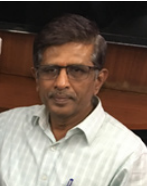
Prof D Narayana Rao was born on May 1, 1949 at Anantapur District
of Andhra Pradesh, India. He obtained all his elementary, high
school, graduation and post-graduation from his native place before
moving to IIT Kanpur for his Ph D studies. His Master’s degree
(1971) was in Physics completed at S. V. University Post Graduate
Centre (now known as Sri Krishnadevaraya University). Doctoral work
was on spectroscopic studies on rare-earth doped single crystals.
After completion of his Ph. D work (1978), he spent a year at IIT
Delhi Physics Department as a Research Associate and moved back to
IIT Kanpur as a Scientific Officer in Laser Labs. In 1982 he moved
to State University of New York at Buffalo as a Visiting Scientist
and spent next eight years at different institutions in USA
(Research Scientist at Massachusetts Institute of Technology,
Cambridge, USA, University of Massachusetts at Boston, University
of Massachusetts at Lowell). He joined as a Reader at University of
Hyderabad in 1990 and became a full Professor in 1998. He had many
years of collaboration with University of Trento, Italy. After
retirement in 2014, he became UGC BSR Faculty Fellow, then he was
awarded the DAE Raja Ramanna Fellowship. Currently he is an
Emeritus Professor at School of Physics, University of Hyderabad.
His current research interests are in nonlinear optics, excited
state dynamics, laser direct writing, surface structure
modifications through laser irradiation, 2D IR and Optical
spectroscopies and fluorescence spectroscopy, 1D and 3D photonic
crystals.
Academic and Research Achievements: Prof. Narayana Rao was involved
in the development of MW and mm wave spectroscopy, CO2, FIR, ps and
fs laser systems, study of ultrafast dynamics of excited states,
transient grating spectroscopy, waveguide CARS that can achieve
mono-layer sensitivity, spectral diffusion studies in organic
solids, measurement of the second and third order susceptibilities
through EFISHG, SHG, FWM, Z-scan, electro-absorption, Surface
enhanced Raman Scattering (SERS), green synthesis of metal
nanoparticles and their medical applications, optical limiting,
etc. He studied ultrafast phenomena in the fs time scales using a
ns laser, through what is known as incoherent laser spectroscopy.
He demonstrated Pancharatnam phase through a very simple
experiment. He demonstrated anti-Stokes emission at 570 nm with 633
nm He-Ne laser. His recent studies on spectral shift through
interferometry demonstrates its utility for the measurement of
displacements as small as few nm. He has made an excellent progress
in the area of optical limiting, where the limiter transmits
linearly in the low intensity regime but limits to a threshold at
high intensities. His studies on local fields throw light on real
and virtual cavities appearing in the literature. Recent studies
also include super continuum generation, subsurface 700 nm
waveguide channel preparations in glasses and polymers. In addition
to the development of research labs at University of Hyderabad, he
developed a very good Laser Physics teaching lab for the Master’s
students.
He published over 300 research papers in peer-reviewed
international journals and guided 22 PhD students. Many students
from other institutions completed their Ph D work from his lab.
Completed 20 DST, DAE, ISRO, CSIR and DRDO projects. Has a citation
index of 7150, h index of 44, and i10 index of 143 as on 2020. He
was an invited speaker at many national and international seminars.
He is a reviewer for most of the optics Journals, was Director of
SERC School on Nonlinear Optics, Convenor of National Laser
Symposium and International Conference on Photonics. He has a
Patent: All optical devices, US patent no. 5,757,525
He was awarded senior NRC Fellowship (USA). He is a senior Life
Member of Optical Society of America, Life Member Optical Society
of India, Life Member Indian Laser Association, Fellow of Telangana
and Andhra Pradesh Academies of Science, Elected president of
Indian Laser Association, served as Editorial Board member of
Pramana, Journal Frontiers in Physics: Optics and Photonics. He
served as a Member of the DST - PAC, FIST, Fast Track, CRG, NPDF
and Early Career schemes for more than 25 years.
About Guest Editors
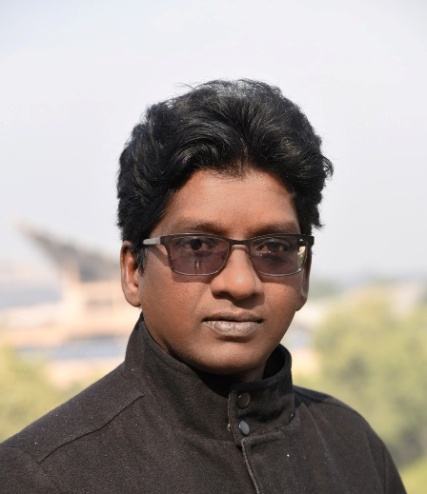
G Vijaya Prakash
Prof G Vijaya Prakash has been in the intense research of
nanophotonics and photonic technologies for more than two decades.
His enthusiastic initiative in developing collaborations across the
world and passion on research enabled him to explore a diverse
range of research topics. His scholarly work is evidenced by more
than 180 scientific journal publications and his research has been
demonstrated in many major international conference
talks/presentations. So far he has guided/guiding 25 Ph Ds and
guided more than 40 post graduate students. He holds research
grants of more than 06 Crs, as PI and ~Rs.60Cr as Co-PI from
reputed Indian and abroad funding agencies. He is recipient of
prestigious research awards from Italy (INFM), UK (Royal Society,
UKIERI) and from India (High Impact research of IIT Delhi). He has
been a visiting professor/faculty to University of Cambridge (UK)
and University of Southampton (UK) from the past 15 years. He
delivered many invited talks in India and abroad (UK, Italy,
Singapore, Spain, France and Egypt).
Currently he is serving as a Institute Chair Professor and group
leader of nanophotonics research labs at IIT Delhi and holds
several administrative responsibilities such as Professor in-charge
of academic facilities and institute time-table
in-charge.
Further details can be found from Website:
http://nanophotonics.iitd.ac.in/
IITD profile http://iitd.irins.org/profile/70731
ORCID : https://orcid.org/0000-0003-0450-3767
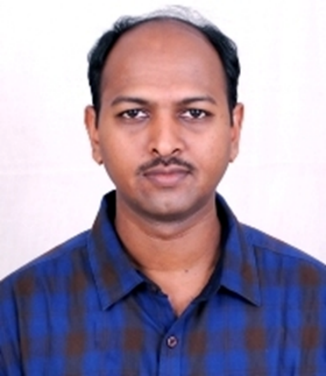
Dr. B
Maruthi Manoj obtained his Ph D in Physics from the University of
Hyderabad. He did his post-doctoral research from the University of
Electro-Communications, Japan. He joined as Assistant Professor in
the Department of Physics, IIT Kharagpur in 2013. He received
DST-Inspire Faculty Award in 2013. His current research interests
are in Singular Optics, Correlation Optics, Spectral Interferometry
and Optical Holography.
Website:
http://www.iitkgp.ac.in/department/PH/faculty/ph-bmmanoj
ORCID:
https://orcid.org/0000-0003-0442-3599
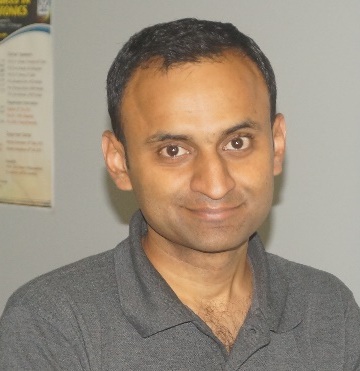
Dr Shivakiran Bhaktha B N received his Masters of Science (Physics)
from Sri Sathya Sai Institute of Higher Learning, Prasanthi
Nilayam, India in 2003 and Ph D. from the School of Physics,
University of Hyderabad, India in 2006. As a part of his
post-doctoral fellowship he has visited various laboratories:
Université des Sciences et Technologies de Lille, France, CNR-IFN,
CSMFO Lab., Trento, Italy, LPMC-CNRS, Nice, France and TIFR,
Mumbai, India. His areas of interest include waves in random media,
glass photonics, glass-ceramics, photonic crystals, microresonators
and optofluidics. He joined the Department of Physics, Indian
Institute of Technology Kharagpur, India in 2011 and is currently
serving as an Associate Professor. More details can be found
on:
Website:
http://iitkgp.ac.in/department/PH/faculty/ph-kiranbhaktha
ORCID: https://orcid.org/0000-0003-4846-8262
Appreciation in Honor of Professor D. Narayana Rao

It gives me great pleasure to express my admiration and share Prof.
D. Narayana Rao’s scientific contributions to the field of laser
spectroscopy and nonlinear optics. I had a chance to know him in
1988 when he joined my group as a CSIR Pool Officer. He took very
active interest in establishing a Holography lab and introduced
several experiments for the M Sc students. At that time, I was
looking for a scientist who could develop experimental laboratories
in laser spectroscopy. Narayana had the right background, having
being trained in some of the best laboratories in India and USA.
Thus, we decided to hire him for the middle level faculty position
and provided funding for starting research laboratory.
He came to me in search of a position in India after working for
many years in Prof. Paras N. Prasad’s lab at State University of
New York at Buffalo, NY, USA. He did his Ph D under the guidance of
Prof. Ramachandra Rao Dasari, and the well-known scientist
Professor, P. Venkateswarlu. His Ph D work was on “Site selective
fluorescence spectroscopy from the rare-earth doped calcium
fluoride crystals”. From his resume, I came to know that he joined
the IIT Kanpur in the year 1971 after completing Master’s Degree
from Sri Venkateswara University Post Graduate Centre at Anantapur
in Andhra Pradesh. At IIT Kanpur he developed experimental skills
on microwave spectroscopy of different organic gases, MW-Infrared
double resonance to derive the absorption coefficients, distortion
constants, harmonic generators to reach up to 54 GHz, Rare-earth
doped crystal growth, development of CO2 laser, etc. After
completion of his Ph D in 1978, he worked as a Research Associate
under the joint guidance of Profs. K. P. Jain, S. C. Abbi and S.
Chopra to develop the Raman Spectroscopy lab using an Ar+ laser in
the Department of Physics, IIT Delhi. After working for a year
there, he returned to IIT Kanpur as a scientific officer to assist
Prof. Putcha Venkateswarlu. In 1981, he was offered a post-doctoral
position in the Photonics Laboratory, State University of New York
at Buffalo, USA under Prof Paras N. Prasad. He told me that quite a
lot of development responsibility fell on him as he was from
physics background and with good amount of instrumentation
experience. His first publication was on the development of mixed
gas FIR laser excited by CO2 laser, a region which is now popular
with the name of THz. He went on working on ns Nd:YAG, ps ML and QS
Nd:YAG laser, fs lasers staring from 300 fs to 60 fs dye laser at
SUNYAB, USA. He started working on nonlinear optics problems such
as: Transient grating spectroscopy, Coherent anti-Stokes Raman,
CSRS, waveguide CARS, diffused reflectivity with FIR lasers,
spectral diffusion in organic solids at supercooled liquid He
temperatures.
After joining University of Hyderabad, he developed a strong
collaboration with Dr. Dasari and Prof. M. Feld of MIT, Prof. D.
Gopal Rao at UMASS, Boston, USA and University of Trento, Italy. It
is quite amazing that he could produce nearly twenty-two Ph D
scholars from this lab, which was an empty hall in 1991. He
interacted with many scientists at University of Hyderabad and
other institutions; to name a few Prof. Bhaskar Maiya, Prof. T. P.
Radhakrishnan, Prof. Chandrasekher from Chemistry, Prof. Reddanna
from Life Sciences. Nearly a dozen students from other departments
and institutions have completed their Ph D work from his lab. Most
of his students have settled as faculty members at different
institutions in India and abroad.
He helped Prof. Tewari in establishing the ACRHEM in the initial
stages. Three of his students are now professors in ACRHEM working
on laser applications to high energy materials. He was quite
dynamic in writing proposals to different funding agencies and
received nearly 18 projects during a period of 25 years as a
faculty in the School of Physics, University of Hyderabad. He also
had three major projects with Trento University, Italy and one
project with Australian National University as collaborative study
in the area of nonlinear optics.
He worked on several area of spectroscopy and nonlinear optics:
Microwave spectroscopy, Development of lasers, Fluorescence
spectroscopy, crystal growth, Wolf shift, Spectral Interferometry,
Incoherent Laser Spectroscopy, Studies on Local Fields, Ultrafast
Dynamics, Transient Grating Spectroscopy, Coherent Anti- Stokes
Raman Spectroscopy, Nonlinear Spectroscopy, Four Wave Mixing,
Z-scan, 1D and 3D Photonic Crystals, Nanoplasmonics, Surface
Enhanced Raman Spectroscopy, Supercontinuum Generation, Laser
Ablation, Green Synthesis of Nanoparticles, and Laser Direct
Writing.
In the initial stages I asked him to work on our theoretical
predictions on spectral interferometry and Wolf shifts-he did do it
successfully and produced a sensitive method of measuring
refractive index. Given his expertise on rare earth halides, I
asked him to prepare materials where refractive index could be
controlled so that one test different models of local fields in
dense media. He did such a study successfully which was published
in Physical Review Letters.
He is close to three hundred refereed publications in international
journals and presented an equal number in international
conferences. He received NRC (USA) Fellowship, UGC-BSR Faculty
Fellowship and DAE Raja Ramanna Fellowship. He is a Fellow of
Academies of Telangana and Andhra Pradesh. As an Emeritus
Professor, he is working on Antireflecting surfaces,
Superhydrophobic surfaces, 1D and 2D Photonic crystal
structures.
I have felt a great deal of satisfaction that I made the right
choice in hiring him and entrusting him with the responsibility of
developing modern laser spectroscopy. It must be added that in
nineties, his lab became one of the few labs in India devoted to
modern laser spectroscopy. I wish him all success in
life.
G S Agarwal
Mitchell Physics Building IQSE 574, 4242 TAMU
College Station, TX 77843-4242
girish.agarwal@tamu.edu
April 19,2021, Monday.
Articles
in Press
From Spectral Interferometry to Spectral Interferometry –A short journey through complex optical fields
Nirmal K Viswanathan
Transverse Optical Current in Off-axis Vortex Beams
Satyajit Maji, Maruthi M. Brundavanam
Ultrafast electron injection kinetics and effect of plasmonic silver nanoparticle at organic dye-TiO2 interface
Chinmoy Biswas,Md Soif Ahmed and Sai Santosh Kumar Raavi
Coherent Plasmonic Absorption in the Femtosecond Regime
Venkatram
Nalla, Xu Fang, João Valente, Handong Sun and Nikolay I
Zheludev
Recent Advances in Optics (RAO): Contribution of D. Narayana Rao in Optics and Photonics research in India
Jitendra Nath Acharyya and G Vijaya Prakash
Higher Order Photonic Stop-Bands and Random Lasing in Microflower Decorated Polystyrene Opals
N N Subhashree Ojha, Anirban Sarkar and B N Shivakiran Bhaktha
Ultrafast Nonlinear Optical and Spectroscopic Studies at the University of Hyderabad
S Venugopal Rao, S Hamad
Advances in LIBS applications in India
Akash Kumar Tarai, Rajendhar Junjuri and Manoj Kumar Gundawar
© ANITA PUBLICATIONS
All rights reserved
Designed & Maintained by
Manoj
Kumar